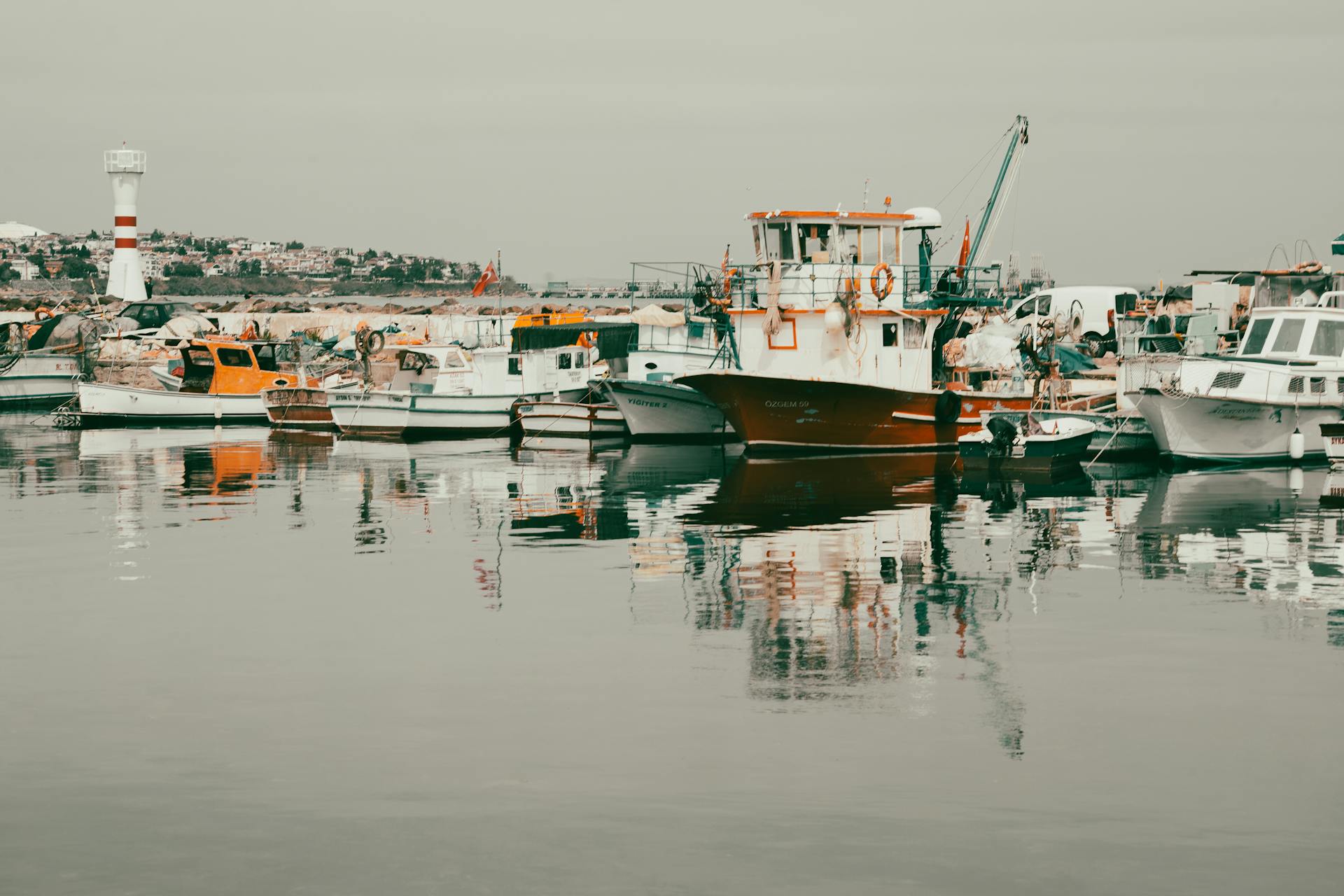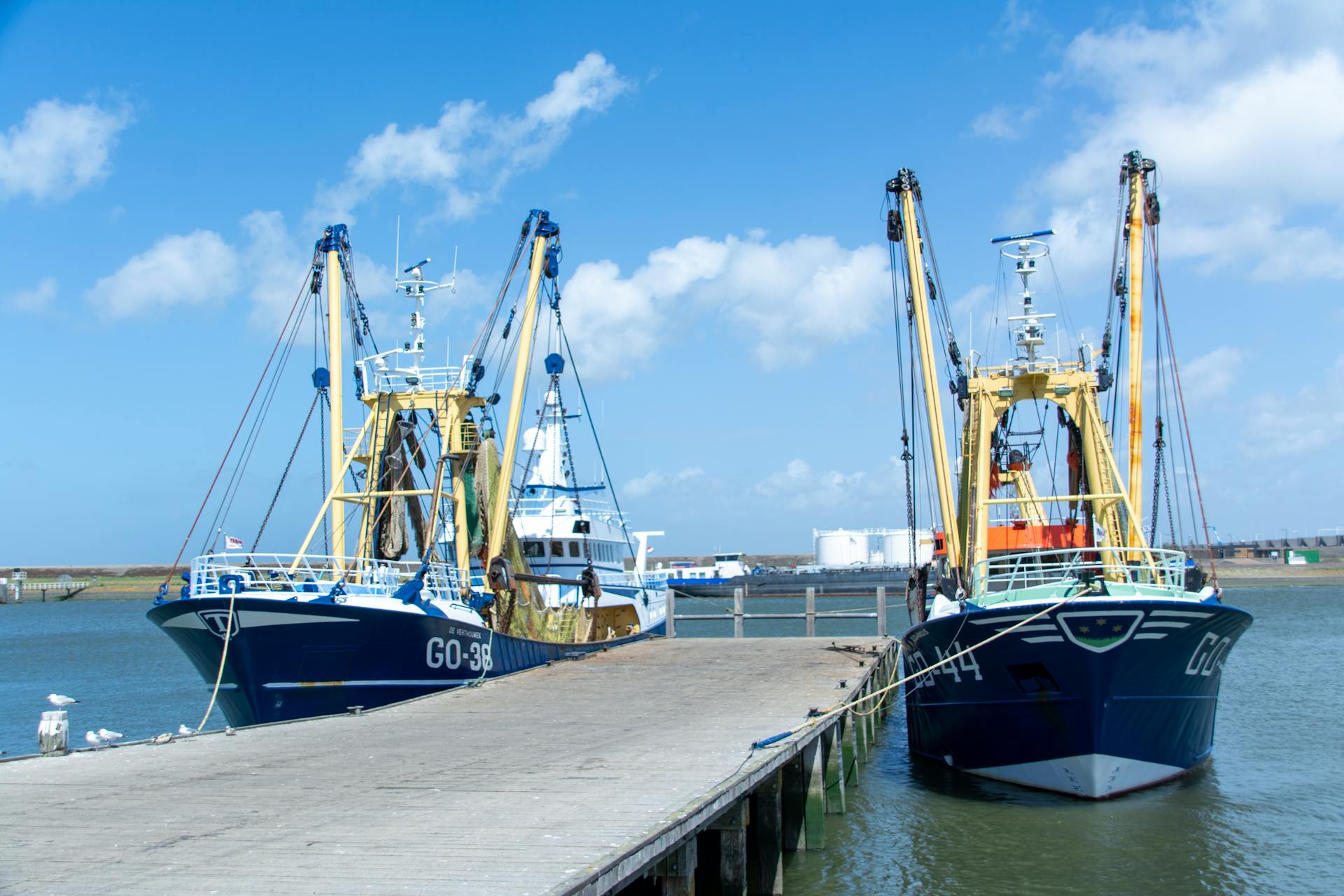
The New York Port of Embarkation has played a crucial role in military operations for decades. Strategically located on the Hudson River, it has served as a key departure point for troops and equipment heading to Europe during both World War I and World War II.
The port's importance can be attributed to its proximity to major military bases and its access to the Atlantic Ocean, allowing for efficient transportation of personnel and supplies. Its location has also made it a hub for naval operations, with the U.S. Navy operating from the port during wartime.
During World War I, the New York Port of Embarkation processed over 1 million troops, with the majority heading to France. The port's capacity and logistics played a significant role in supporting the war effort.
General Organization
The New York Port of Embarkation was a well-oiled machine during World War II, with a general organization that allowed it to efficiently handle the massive influx of troops and supplies.
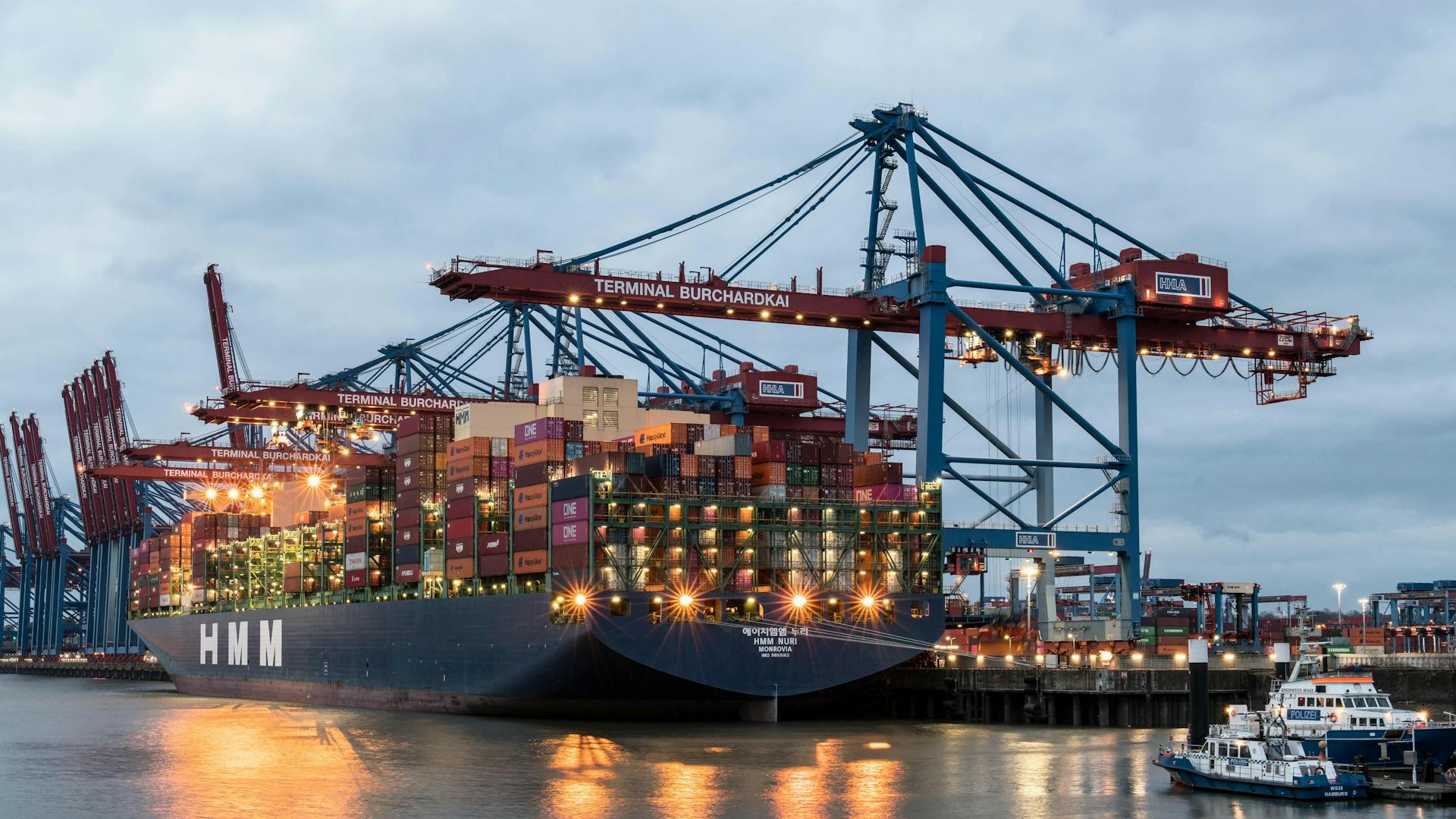
Each port had a similar structure, with five main divisions that worked together to keep things running smoothly.
The Overseas Supply Division was in charge of requisitioning supplies from overseas commands and scheduling their movement to transports.
This division worked closely with the Port Transportation Division, which was responsible for getting both passengers and cargo in and out of the port.
The Troop Movement Division was in charge of getting troops through the port, handling everything from processing to billeting to coordinating with other divisions.
The Initial Troop Equipment Division made sure troops were properly equipped before they left the port, controlling the movement of equipment and supervising the final outfitting of troops.
The Water Division was responsible for vessel loading and discharge, operation, maintenance, and repair, as well as employing vessel crew and port stevedores.
Here are the five main divisions of the New York Port of Embarkation, summarized:
- Overseas Supply Division: handled supply requisitions and scheduled movement of supplies
- Port Transportation Division: handled passenger and cargo movements
- Troop Movement Division: controlled movement of troops through the port
- Initial Troop Equipment Division: controlled movement of equipment and supervised final outfitting of troops
- Water Division: responsible for vessel loading/discharge, operation, maintenance, repair, and conversion
Facilities
The New York Port of Embarkation (NYPOE) had a vast array of facilities to support its operations. Camp Mitchel at Mineola and Camp Upton at Yaphank on Long Island were two key facilities associated with the port.
The port's terminals were a crucial part of its operations, with ten terminals in total. Here's a breakdown of some of the notable terminals:
- Brooklyn Army Base, with 3,800,000 square feet of storage space and sidings for 450 rail cars.
- Bush Terminal, with eight piers and 1,500,000 square feet of storage space.
- Staten Island Terminal, with ten piers and 4,500,000 square feet of storage space.
- Howland Hook Terminal, specifically for petroleum products refined at Bayonne and Elizabeth, New Jersey.
Caven Point in Jersey City, New Jersey, was another important facility, serving as an ammunition and explosives loading facility with a pier for direct loading of ships from rail cars.
If this caught your attention, see: New York–New Jersey Harbor Estuary
Staging Areas
Staging areas played a crucial role in the port's operations, ensuring troops were prepared and equipped before boarding transports.
The initial idea of transporting troops directly from home stations to ship-side was rejected, and instead, staging areas were established to prevent delays and ensure vessels sailed fully loaded.
Troops were housed and prepared in these camps for a period of usually a week, but sometimes up to two weeks, before embarkation overseas. This allowed for final training, equipping, and preparation of troops in coordination with troopship and convoy schedules.
Camp Kilmer in New Jersey was one of the largest staging areas, with a troop capacity of over 37,500. Troops were moved by rail to Jersey City, New Jersey to board ferry boats for the embarkation piers.
Camp Shanks in Orangeburg, New York, was another significant staging area, dubbed "Last Stop USA", with a troop capacity of over 34,600. About 1,300,000 troops passed through this camp.
Fort Hamilton and Fort Slocum were also used as staging areas, with Fort Hamilton having a troop capacity of 5,700 and Fort Slocum serving as a Transportation Corps officer training center and staging area as needed.
The port commander was responsible for ensuring units were at full strength, fit, and fully equipped before boarding transports, and maintained replacement pools to replace missing or unfit troops.
Terminals
The terminals were a crucial part of the port facilities, with ten different terminals spread across the city. These terminals played a vital role in the transportation of troops, supplies, and equipment.
The Brooklyn Army Base was one of the largest terminals, with 3,800,000 square feet of storage space and sidings for 450 rail cars. Bush Terminal, located near the Brooklyn Army Base, had eight piers and 1,500,000 square feet of storage space.
Discover more: Portable Storage Containers in New York City
Staten Island Terminal was another significant terminal, with ten piers and 4,500,000 square feet of storage space. It also had large open storage facilities and sidings for 235 rail cars.
Howland Hook Terminal was used for petroleum products refined at Bayonne and Elizabeth, New Jersey. Fox Hills on Staten Island served as a training area for Army Port Battalions with housing for port personnel.
Port Johnson in Bayonne, New Jersey, had open storage facilities and was a focal point for preparing and processing combat vehicles for shipment. North River in Manhattan was the principal troop embarkation point, with seven piers.
The Army Postal Terminal was responsible for ensuring mail sacks were properly addressed and loaded for earliest delivery without undue risk. During the Christmas rush of 1944, it handled about 2,600,000 mail bags.
The Special Services Supply Terminal shipped 4,000,000 magazines and 5,000,000 booklets to overseas troops. Caven Point in Jersey City, New Jersey, was an ammunition and explosives loading facility with a pier for direct loading of ships from rail cars.
Here's a summary of the terminals:
- Brooklyn Army Base: 3,800,000 sq ft of storage space, sidings for 450 rail cars
- Bush Terminal: 8 piers, 1,500,000 sq ft of storage space
- Staten Island Terminal: 10 piers, 4,500,000 sq ft of storage space
- Howland Hook Terminal: Petroleum products refined at Bayonne and Elizabeth, NJ
- Fox Hills: Training area for Army Port Battalions with housing for port personnel
- Port Johnson: Open storage facilities, focal point for combat vehicle shipment
- North River: Principal troop embarkation point with 7 piers
- Army Postal Terminal: Ensured mail sacks were properly addressed and loaded
- Special Services Supply Terminal: Shipped 4,000,000 magazines and 5,000,000 booklets
- Caven Point: Ammunition and explosives loading facility with direct loading pier
Associated Facilities
Camp Mitchel at Mineola was a key facility associated with the NYPOE.
The NYPOE also had a connection to Camp Upton at Yaphank on Long Island.
Fort Indiantown Gap in Pennsylvania was originally a Transportation Corps facility associated with the port.
This facility, although not under the NYPOE's command, was used to train port troops.
Here are some of the associated facilities mentioned:
- Camp Mitchel at Mineola
- Camp Upton at Yaphank on Long Island
- Fort Indiantown Gap in Pennsylvania
Operations
The New York Port of Embarkation is a vital transportation hub, with a rich history dating back to the early 20th century. It was established in 1917 as a major embarkation point for military personnel and cargo during World War I.
The port's operations are highly organized, with a specific division for cargo handling, including the processing of over 2 million tons of cargo annually. The cargo division is responsible for ensuring timely and efficient loading and unloading of goods.
The port's cargo capacity is impressive, with a total of 13 cargo piers and 2 cruise ship terminals. This infrastructure allows for the simultaneous handling of multiple ships and cargo types.
World War I Operations

World War I Operations were massive in scale, involving over 40 countries and 65 million soldiers. This led to a complex web of alliances and rivalries that ultimately contributed to the outbreak of war.
The war was fought on multiple fronts, including the Western Front in France and Belgium, the Eastern Front in Russia, and the Italian Front in Italy. The Western Front was particularly brutal, with trench warfare becoming a hallmark of the conflict.
The introduction of new technologies, such as tanks and airplanes, revolutionized modern warfare. The first tanks were deployed by the British in 1916, and they proved to be highly effective in breaking through enemy lines.
The war also saw the use of poison gas, which was first used by the Germans in 1915. This led to a significant increase in casualties and a change in the way soldiers fought.
The war was fought largely by conscription, with many young men being drafted into the military. This led to a significant loss of life, with over 11 million soldiers killed or wounded.
The war finally came to an end on November 11, 1918, with the signing of the Armistice of Compiègne.
Subports
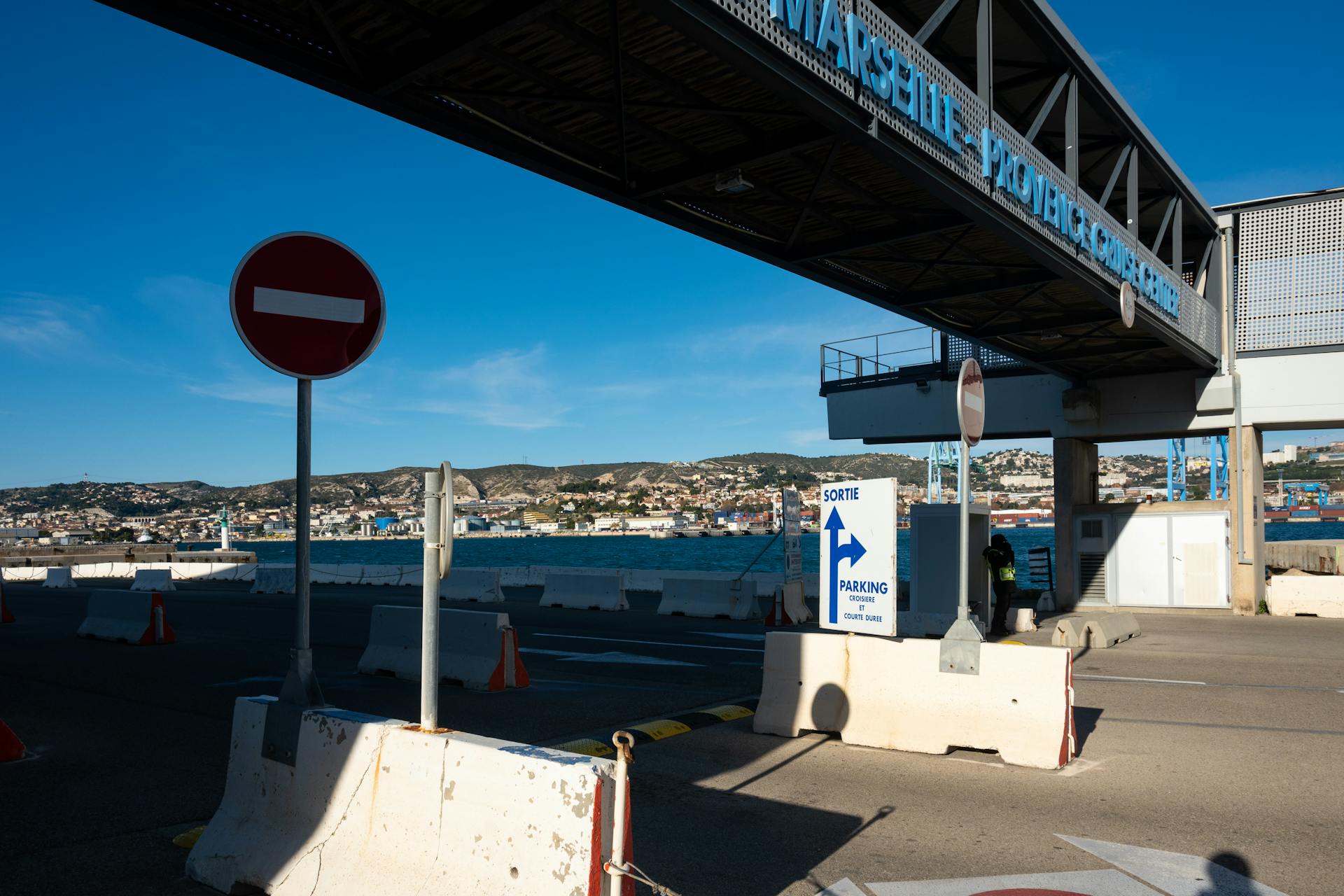
Boston was a sub-port under the New York Port of Embarkation command until July 1942 when it became a port in its own right.
Philadelphia was established as a cargo port under the command of the New York Port of Embarkation, supplementing NYPOE in explosives shipment.
Some 475 passengers embarked at Philadelphia in 1943 and 1944, with their numbers included in the NYPOE total.
Philadelphia's original two ammunition and explosives berths were expanded to six, matching the capacity at New York's Caven Point terminal.
The New York Port of Embarkation had a sub-port in Boston, which became its own port in July 1942.
The Hampton Roads Port of Embarkation became a sub-port of the New York Port of Embarkation effective 31 March 1954.
Philadelphia was an important supplement to NYPOE in explosives shipment, with its expanded capacity matching that of New York's Caven Point terminal.
Intriguing read: Moving Companies Philadelphia to New York
Supply
The supply chain was a complex beast during World War II, especially in the New York Port of Embarkation (NYPOE). In early 1943, a cooperative scheme was implemented to resolve the differences between the Army's supply and transportation organizations.
A shortage of shipping had complicated matters, with ports trying to use every available space to fill ships. This led to some material being loaded that wasn't actually required by the overseas command, causing inefficiencies.
The solution was to have supply and transportation work closely together under the Commanding General, Army Service Forces. Theater commands placed supply orders through the ports of embarkation, which was largely developed at NYPOE based on experience gained in supplying forces in North Africa.
The supply cycle was geared to convoy sailings under Navy control, with NYPOE coordinating with Navy and controlling supply movement from depots to piers and ships. They even coordinated with production schedules to meet transportation requirements efficiently.
A massive effort was made to mobilize material, with 60 temporary warehouses constructed at Fort Jay on Governors Island, providing over 3,000,000 square feet of space.
The Army was responsible for the majority of explosives shipping, including large bombs for its air forces and lend-lease shipments to Britain and the Soviet Union.
Related reading: Port to Door Shipping
Troop Movements
Troop movements were a critical part of operations during World War II, and the New York Port of Embarkation (NYPOE) played a key role in coordinating these efforts.
The NYPOE controlled troop movements from their home stations or bases to the port, where they were properly equipped and prepared for overseas deployment. This was a complex process that involved matching troops and schedules with equipment not issued at the home base.
The availability of transports and sailing dates was the most critical timing factor in troop movements. The NYPOE worked to minimize delays and time in embarkation camps at the port.
Large movements of troops toward ports were conducted in secrecy to prevent sabotage en route and avoid alerting agents of possible large troop sailings. Restrictions were imposed on railroads and even the Red Cross to ensure secrecy.
The NYPOE produced a film detailing the important procedures prescribed by the Preparation for Overseas Movement directives. This film helped to standardize the process and ensure that all parties involved understood their roles.
You might enjoy: Msc Cruises Announces New Home Base at Port Canaveral
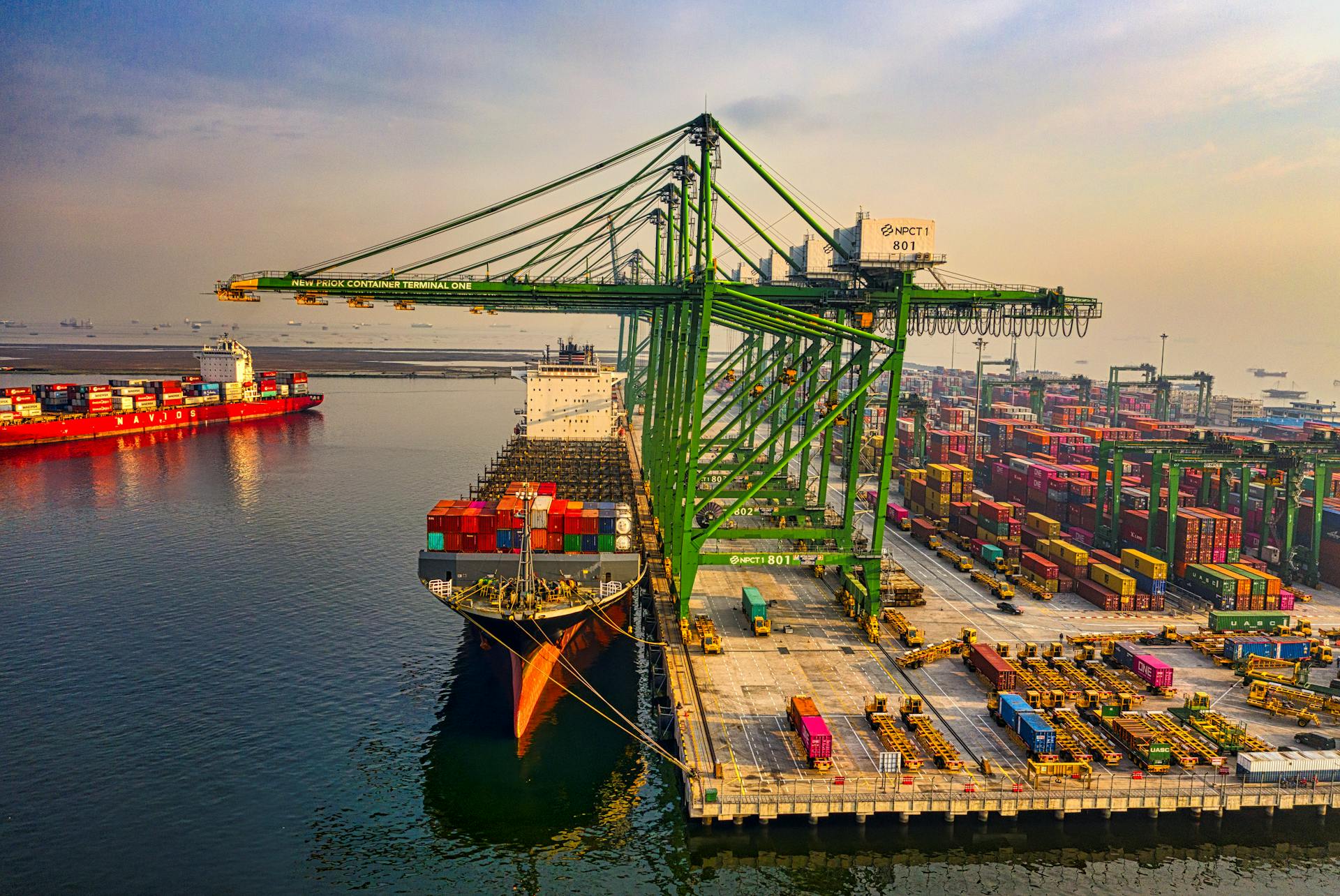
Here's a summary of the key players involved in troop movements:
The Special Navy Advance Group 56 (SNAG 56) was sent by train from a Naval Training Center at Lido Beach on Long Island, using "devious routes", to Jersey City where the unit boarded a ferry taking them to pier 86 in Manhattan.
Maintenance
The New York Port of Embarkation was a hub for ship maintenance and conversion. Plans for six Liberty ship conversions were made by naval architects Cox and Stevens.
The port's maintenance team worked closely with the Surgeon General's Office to plan modifications to Army transports. These conversions included turning some ships into hospital ships.
The Maintenance and Repair Branch of the Water Division played a key role in handling the remainder of the ship plans. They worked side by side with Cox and Stevens to ensure a smooth conversion process.
The New York Port of Embarkation was a well-oiled machine when it came to ship maintenance and conversion.
Concept Development
The concept of the New York Port of Embarkation was born out of the need for a major port to handle the growing volume of military cargo and personnel during World War II.
In 1942, the US Army took control of the port, which was previously operated by the US Shipping Board.
The port's strategic location on the Hudson River allowed for easy access to the Atlantic Ocean and the Panama Canal.
It was a vital transportation hub, connecting the East Coast to the rest of the country and the world.
The port's cargo capacity was significantly increased through the construction of new piers and warehouses, with the addition of 1,500 feet of new dock space.
The port's operations were highly organized, with a system of cargo classification and priority shipping that ensured the efficient movement of goods and personnel.
The port's role in supporting the war effort was crucial, with thousands of tons of cargo and supplies passing through the port each month.
Accomplishments
The NYPOE was truly a massive operation, controlling piers with berths for 100 oceangoing vessels. By the close of 1944, it also had an impressive 4,895,000 square feet of transit shed space.
The NYPOE's infrastructure was massive, with 5,500,000 square feet of warehouse space and 13,000,000 square feet of open storage and working space. This made it the largest of the Army Ports of Embarkation.
By August 1945, the NYPOE had processed an incredible 3,172,778 passengers and 37,799,955 measurement tons of cargo. This was just a small part of the overall totals, with 7,293,354 passengers and 126,787,875 tons of cargo passing through all Army Ports of Embarkation.
The NYPOE's importance was evident in its statistics, with 44% of all troops and 34% of all cargo passing through it.
Specific Events
The New York Port of Embarkation has a rich history of significant events.
In 1906, the first ship carrying immigrants from Ellis Island arrived at the New York Port of Embarkation.
The port played a crucial role in the US entry into World War I, with the first troops departing from the port in 1917.
Between 1920 and 1930, over 5 million immigrants passed through the port, making it one of the busiest in the world.
The New York Port of Embarkation was also a key player in the US war effort during World War II, with millions of troops and supplies passing through the port.
Italian Service Units
The Italian Service Units played a significant role in the New York Port of Embarkation during World War II.
The Brooklyn Army Terminal was a key location for these units, serving as a hub for their operations.
The waterfront area was also home to the Italian Service Units, where they could be seen spotting ships and coordinating logistics.
Some of the notable locations associated with the Italian Service Units in the New York Port of Embarkation include:
- Brooklyn Army Terminal
- Waterfront
These locations highlight the importance of the Italian Service Units in supporting the war effort from the New York Port of Embarkation.
Sources
- https://en.wikipedia.org/wiki/New_York_Port_of_Embarkation
- https://www.wikiwand.com/en/articles/New_York_port_of_embarkation
- https://military-history.fandom.com/wiki/New_York_Port_of_Embarkation
- https://turnstiletours.com/tag/new-york-port-of-embarkation/
- https://turnstiletours.com/italian-service-units-in-the-new-york-port-of-embarkation/
Featured Images: pexels.com
